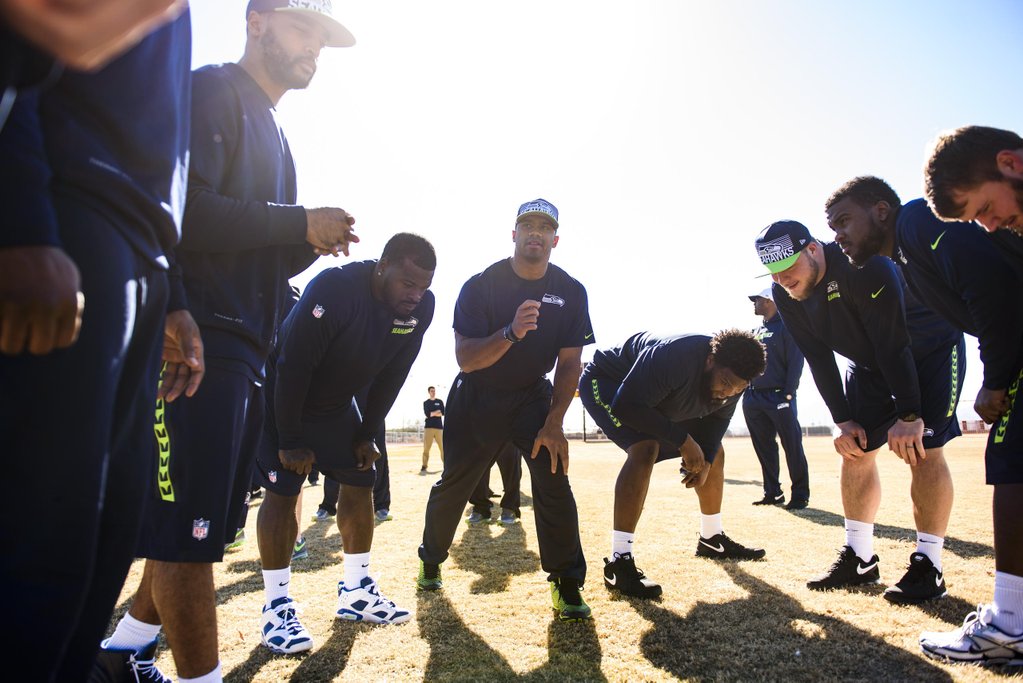Tuccitto starts by showing the NFL average for snap-weighted age from week-to-week:
 |
| Source: FootballOutsiders.com |
Focus on the black line. The typical NFL team stays constant for the first six weeks of the season before starting to play more young players. It stays steady from there until about week twelve, when it starts a decline through the end of the year. Tucitto plotted out the snap-weighted ages from each week for the Ravens and the 49ers to see how they compared to the league average.
 |
| Source: FootballOutsiders.com |
 |
| Source: FootballOutsiders.com |
Tuccitto provides his analysis for how the two teams differed:
That’s quite a contrast. Whereas the 49ers chugged along right around their snap-weighted average age (27.2) until Justin Smith got hurt, the Ravens got a full year-and-a-half younger between their high in Week 6 and their low in Week 17. Losing Ray Lewis (37) against Dallas, and replacing him with Jameel McClain (27) made the team on the field a week later half-a-year younger despite the return of Terrell Suggs (30). An even larger decrease occurred in Week 10, when DeAngelo Tyson (23) and James Ihedigbo (29) played the majority of snaps in place of injured veterans Haloti Ngata (28) and Ed Reed (34). Finally, after returning to baseline for a few games, Baltimore’s snap-weighted age fell by a full year in the last two weeks thanks to players like (the other) Chris Johnson (33) and Bobbie Williams (36) going back to the bench after brief stints as replacement starters, as well as the Ravens retreating into their turtle shell for a relatively meaningless finale.
The 49ers show little interest in developing younger players through the season, at least as far as live game play goes. They likely would have defied the league tendency to get younger as the season wears on if Smith had not been injured. Now look at the Seahawks.
 |
| UPDATED: Now based on 12/31/12 birthdays to match FootballOutsiders.com |
The next dip comes after the bye in week twelve. Much of that is due to an increase in special teams snaps for young players like Jermaine Kearse (22) and Jeremy Lane (22), as well as increased playing time for Malcolm Smith (23) over Leroy Hill (30).
Weeks 14 through 17 see the largest dip due to Brandon Browner (28) getting suspended for PEDs, and youngsters like Lane, Byron Maxwell (24), and Walter Thurmond III (25) taking over.
Seattle appears to follow the general NFL rule that teams get younger as the season wears on. They are clearly playing younger players than the 49ers overall, but the true test of whether that is a philosophical difference or simply a chronological fact will come this season.
Carroll showed a willingness to play young draft picks and undrafted free agents in his first three seasons in Seattle. The team is now a legitimate Super Bowl contender with talent at almost every position, and depth behind the starters. The 49ers did not play their draft picks from 2012 much during the season, and most gave them a pass because the starters were so talented. The same could be true this season for the Seahawks.
San Francisco may be forced to play more rookies and young players due to free agent departures (Dashon Goldson, Isaac Sopoaga, Delanie Walker, etc.) and injuries to players like Michael Crabtree.
The rivalry between these two teams appears destined to last for a while. Should the Seahawks continue to be the organization more willing to play and develop young talent, they are likely to outpace the 49ers in coming years. This becomes another game-within-the-game to keep an eye on for both Seahawks and 49ers fans.
